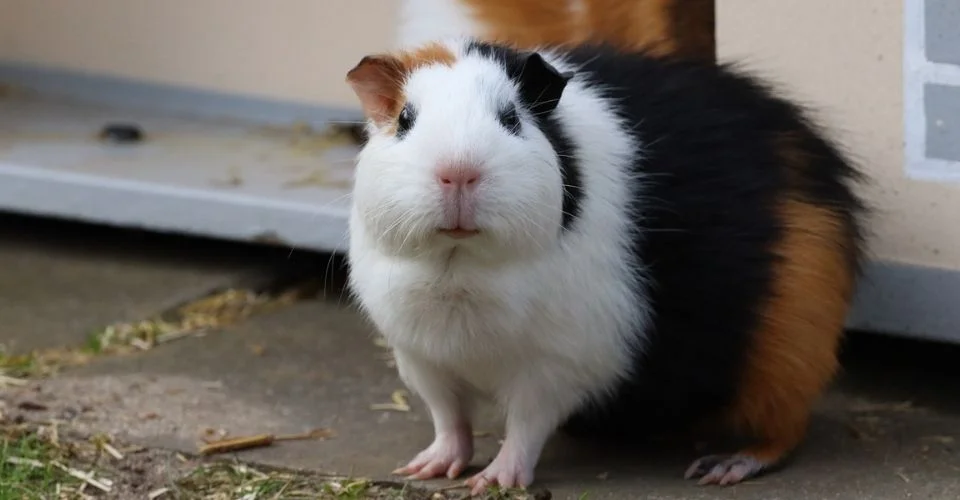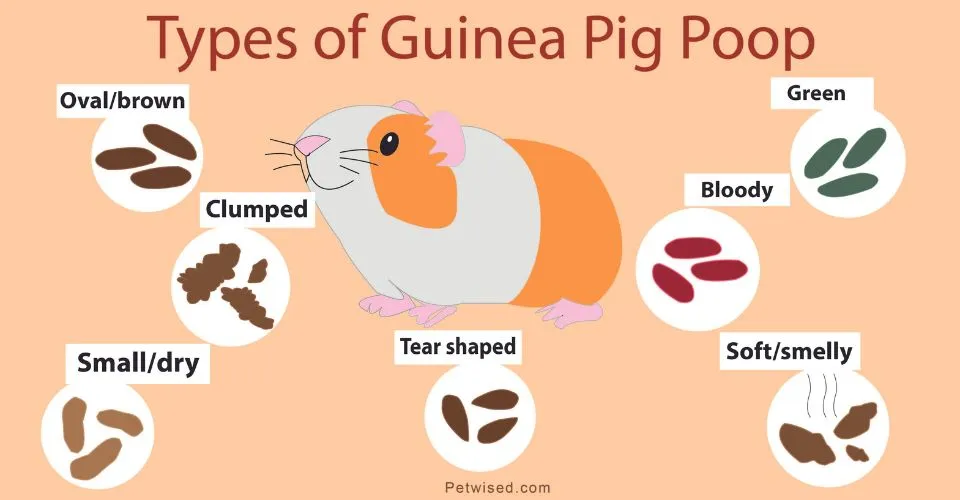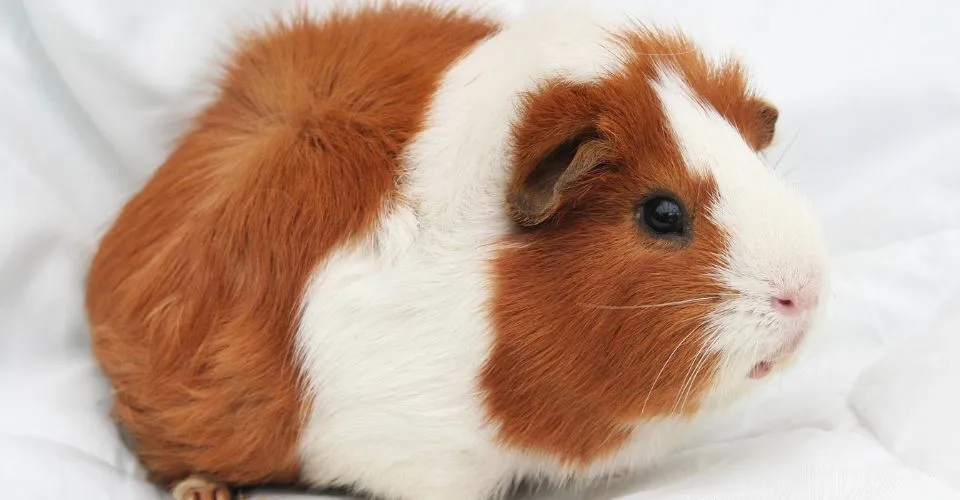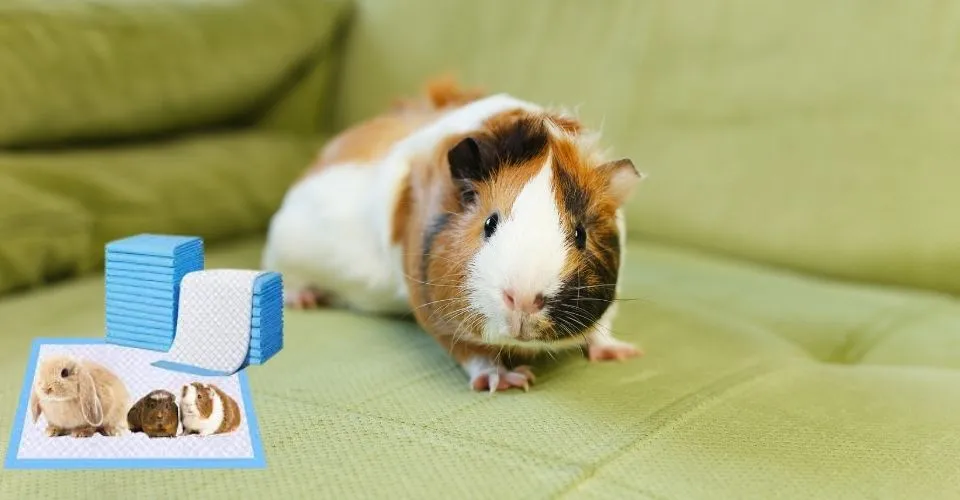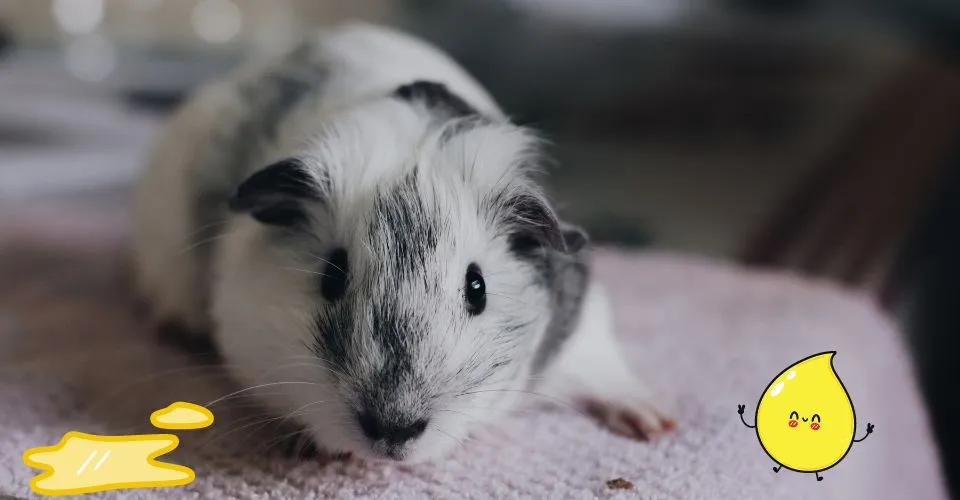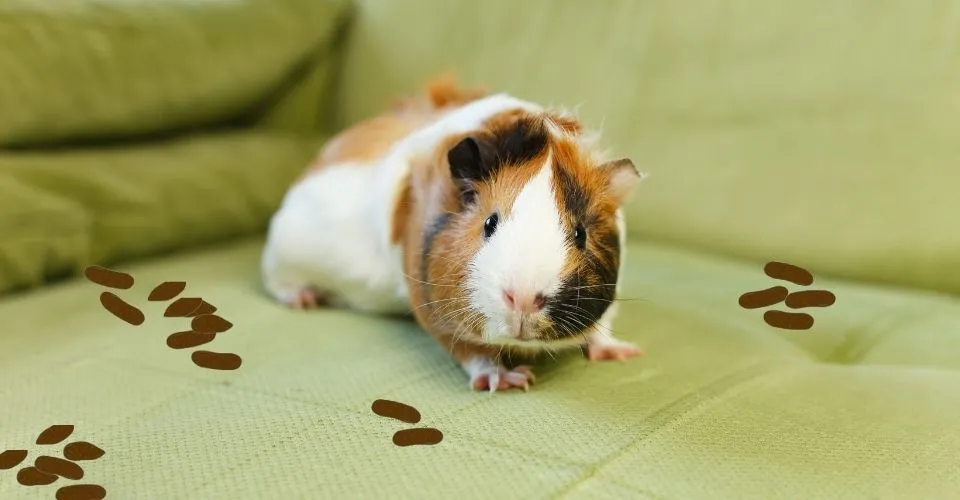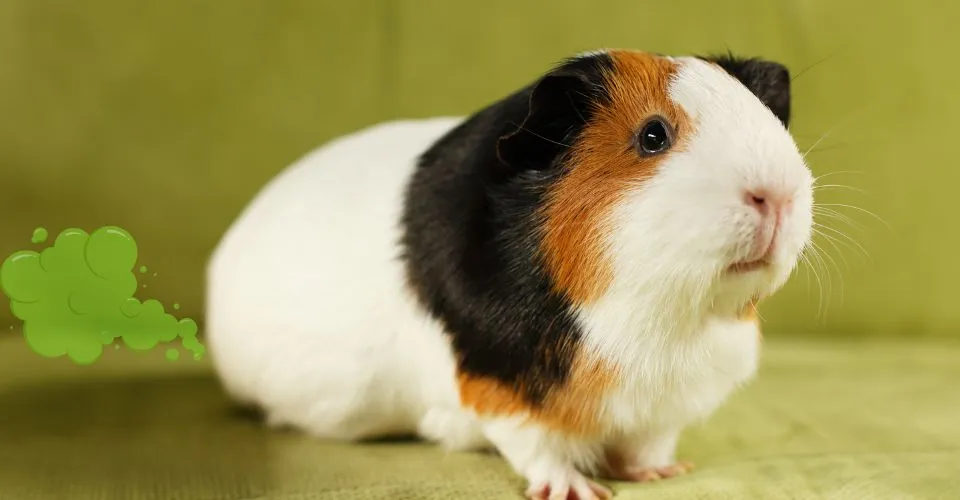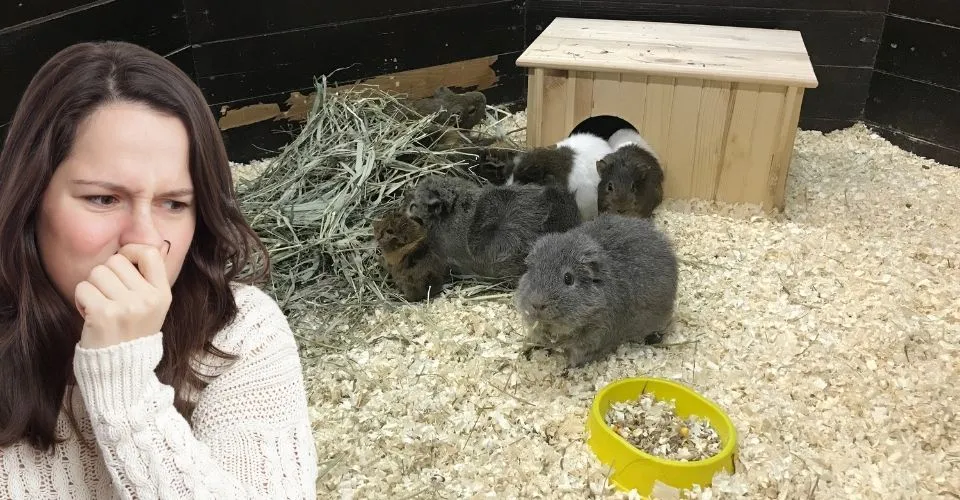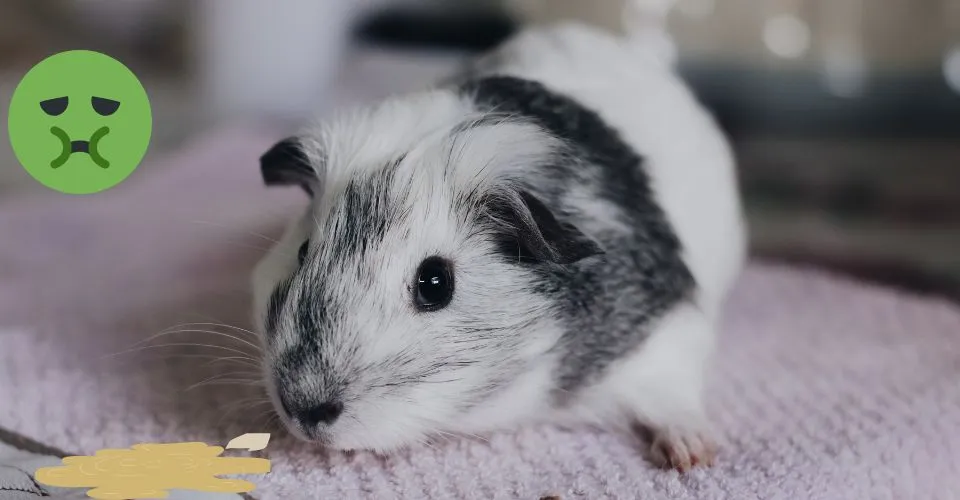Guinea pigs are precocious and prolific breeders. That is, they achieve sexual maturity at a very young age, have a short gestation period of about 9 weeks, and give multiple births, with an average litter size of 2 to 4 pups.
Where female guinea pigs (sows) achieve sexual maturity at around 4 to 6 weeks, male (boars) pups are capable of impregnating their litter mates at around 8 to 9 weeks. This is the reason that guinea pig parents are strongly advised to separate male pups from females as soon as they are weaned off their mother’s milk.
Any interaction between an intact male and female guinea pig could result in pregnancy. Most of the time, pregnancy comes as a surprise to guinea pig owners. But regardless of the intentions, you must be familiar with guinea pig pregnancy stages. So that you could take your cue when your guinea pig starts exhibiting early signs of pregnancy and take him to a veterinarian for confirmation and provide her with the best possible care.
Keeping in mind that the breakdown of guinea pig pregnancy stages into weeks would make it hard for both novice and expert breeders to keep track, we have broken down the guinea pig pregnancy timeline into five stages. Continue reading to learn all about the guinea pig pregnancy timeline.
| Before You Breed Guinea Pigs, ASK YOURSELF: | |
| · Have you considered health complications? · Have you considered vet bills? · Do you have loving homes lined up for pups? · Do you have housing to provide separate homes for male and female guinea pigs? |
Stages of Guinea Pig Pregnancy
Having a guinea pig pregnancy timeline broken down into stages will demystify the experience. You will not only know what is going on with your piglet at each stage but would also know how could you provide the best possible care and stress-free environment to your little mama pig and the tiny pups growing inside of her.
Guinea Pig Mating Ritual—Getting Pregnant
Guinea pigs are polyestrous, which means that they have estrous (heat) cycles throughout the year. Guinea pig heat cycles last for about 2 weeks (16 days to be specific). During estrous, the sow is only receptive to breeding (fertile) for about 6 to 11 hours.
When the female guinea pig (sow) is placed with an intact boar, he will immediately start following her around the cage and sniff her anogenital region. To woo the sow, the boar will try to nuzzle her and gently groom her.
Male guinea pigs interested in mating will put on a ‘manly’ display of rumbling and strutting, wiggling their hips from side to side, standing upright, and puffing up their fur.
- Rumbling and Strutting: Rumbling sound is quite similar to squeaking but is much deeper. The rumbling is often followed by strutting—also known as dominance dance, in which the guinea pig shifts its weight from one hind leg to the other.
- Standing Upright: To appear dominant, attract the sow, and survey his surrounding, the boar stands upright on his hind legs.
- Puffing-up fur: Trying to look dominant, guinea pigs fluff up their fur to look bigger.
If the sow approves of the suitor, she will communicate her acceptance by making loud squeaks. The boar will sniff the sow’s rump (nuzzle) and mount her posteriorly. Mounting will be accompanied by hip thrusts and intromission. Once ejaculation occurs, both guinea pigs will roll back on their haunches and lick (groom) their genitalia. You will also witness a sudden and noticeable quiet period afterward.
If the sow disapproves of the suitor but he continues to push himself onto her, she will snap and bite the boar. You may get to see the sow chasing the boar around the cage. In certain cases, when the boar continues to persist, the sow may even urinate on the boar.
| Role of Copulatory Plug in Guinea Pig Reproduction |
| When guinea pigs mate, the boar’s ejaculation in the sow’s vagina coagulates and leads to the formation of a copulatory plug. The role of the copulatory plug is obscure; however, it is generally believed that it prevents subsequent boars from siring offspring. Other functions ascribed to the copulatory plug include: · By blocking the vagina, it prevents the outflow of spermatozoa · It supports sperm transport to the uterus · Spermatozoa in the plug remain alive for around 12 hours, so it acts as a reservoir for the gradual release of sperms |
Is She Pregnant or Not?
Telling if the sow has been successfully inseminated or not, could be a hard nut to crack, especially in the early few weeks. While there is no way to tell for sure if your female guinea pig is pregnant in its early weeks, if you have been observing the boar and sow fooling around and now things seem to have cooled down, it means they have done the deed.
If the sow has conceived, you will observe a noticeable increase in food and water intake, which lead to a consistent weight gain, and fattening of the belly. Around a month into the pregnancy, you will also be able to feel the lumps (pups) inside your guinea pig’s belly.
Early stages of pregnancy (weeks 1 to 4)
In the early weeks of pregnancy, guinea pigs do not exhibit any physical or behavioral changes. This is the reason that during this stage of pregnancy, most guinea pig parents keep wondering if their sow has gotten pregnant or not.
That said, during this stage, even if you are not sure about pregnancy, you should allow the sow to eat as much as she wants. You should also replace her usual timothy hay with Alfalfa hay to provide extra calcium and proteins for the development of pups. Besides that, you should also start offering extra vitamin C supplements to the sow at this stage—where adult guinea pigs require only 10mg of vitamin C daily, pregnant, lactating, and juvenile guinea pigs need about 20mg of vitamin C every day.
At this early stage of pregnancy, there are two main tell-tale signs indicating potential pregnancy:
- Sow drinking and eating more than usual
- Sow prefers fruits over veggies
By week four, you will also be able to feel baby guinea pigs growing inside the pregnant guinea pig by gently running your hand along her sides. Guinea pigs have a long womb and pups are queued up in there.
| Caution! |
| Do not lift your pregnant guinea pig without supporting her hindquarters. You should only pick your pregnant guinea pig if it is necessary and that too with special care and full support of her hips. |
Middle Stages of Pregnancy (Weeks 5 to 7)
As pregnancy progresses and pups continue to grow, they will take up more space, making the pregnant sow appear physically larger. There would be a significant bump in the belly of the pregnant guinea pig. While this pregnancy bump would be easily noticeable in shorthaired guinea pigs like American guinea pigs, in longhaired guinea pigs like Alpaca guinea pigs, you will really have to focus to see that their belly is fattening up.
Your cavy will be rapidly gaining weight during this stage. The increase in weight and size would depend mainly on the number of pups your sow is carrying. That said, generally, by week seven of pregnancy, pups are about half the total body weight of the sow.
At this stage, you will also be able to observe pups moving underneath her skin unless you have a longhaired guinea pig.
While making sure that all the increased nutritional requirements of your pregnant guinea pigs are met, do not make the mistake of overdoing it. Over-feeding could lead to unhealthy weight gain (obesity), which could make things difficult during the later stages of pregnancy.
Do not stop exercising the sow just because she is pregnant, she needs to maintain her strength up and body fat down. So, continue to exercise her regularly with great care.
| Fetal Growth During Second Half! |
| During the second half of pregnancy, fetal pups experience exponential growth at 7.1% per day. This leads to a significant increase in the pregnant guinea pig’s weight. |
Final Weeks of Pregnancy
As the sow enters the final weeks of pregnancy, there will be significant swelling at the midsection. Into week seven of pregnancy, even longhaired guinea pigs would start showing that they are pregnant.
You will be easily able to see the fetuses’ movements in the belly. And with a gentle touch, you would even be able to tell which part of the fetuses’ bodies are you feeling.
At this stage, the pelvic bone would also start to spread apart. By touching the sow’s belly, a couple of centimeters from the anus, you will be able to feel the separation between the pelvic bones. If the pelvic bones have come around 1 to 2 fingers-width apart, know that your guinea pig may go into labor anytime.

During the final weeks of pregnancy, you should offer some extra special care to the pregnant guinea pig. If other guinea pigs seem to be annoying the pregnant guinea pig, you should remove them from the cage. We advise that you let the pregnant guinea pig stay in the same cage, as a change in surroundings might add to the stress. You should make sure that there is no loud sound or commotion in the vicinity of the guinea pig cage. A stress-free environment is imperative for healthy pregnancies and births, so you should do your best to provide a stress-free environment to your guinea pig.
By the final week, guinea pig hind end of your guinea pig would be humongous. In case your guinea pig is having a large litter, you might find the huge back half of your guinea pig frightening (worrying it might burst).
Guinea pigs do not make nests. So as a responsible guinea pig owner and breeder, you should make a soft and comfy space for the sow and pups-coming-soon by adding a fleece blanket and soft towel to the sleeping section of the cage.
By this time, you should also finish up your arrangements for the guinea pups coming into this world.
Labor and Birth
Normal labor and birth in guinea pigs are short and sweet. The whole process of labor and birth does not take more than 15 to 40 minutes, depending on the litter size, according to guinea lynx.
As the sow goes into labor, she will let out a loud cry. Making a “hiccupping” type of motion (contraction), the sow hunches up to push out a pup. The first pup is birthed within 5 minutes of labor.
| Guinea Pups Are Precocial! |
| When baby guinea pigs come into this world, they are fully developed. They are fully furred with open eyes and ears. They have teeth in their mouths and are ready to start eating solid foods within a few hours of birth. |
Each pup has its own amniotic sac and usually, the mama guinea pigs tear it apart, gobble it up and clean the guinea pig. However, if babies are coming out fast and the mama guinea pig seems to ignore a guinea pig, you should intervene—using a clean towel, gently pick up the pup and carefully tear the amniotic sack from the face and remove it. You should clean the guinea pig and make sure that it is breathing fine.
Similarly, if the mother is exhausted and has not bitten off the umbilical cord, you should cut it about a half inch from the pups’ tummies, using sterilized cuticle scissors. This umbilical cord leads to the formation of the belly button.
| Emergency Medical Attention is Required When: |
| · Bleeding more than a tablespoon · Straining for over 10 minutes with no birth · Retained pup · Retained placenta |
Pups Are Out! What Can You Do?
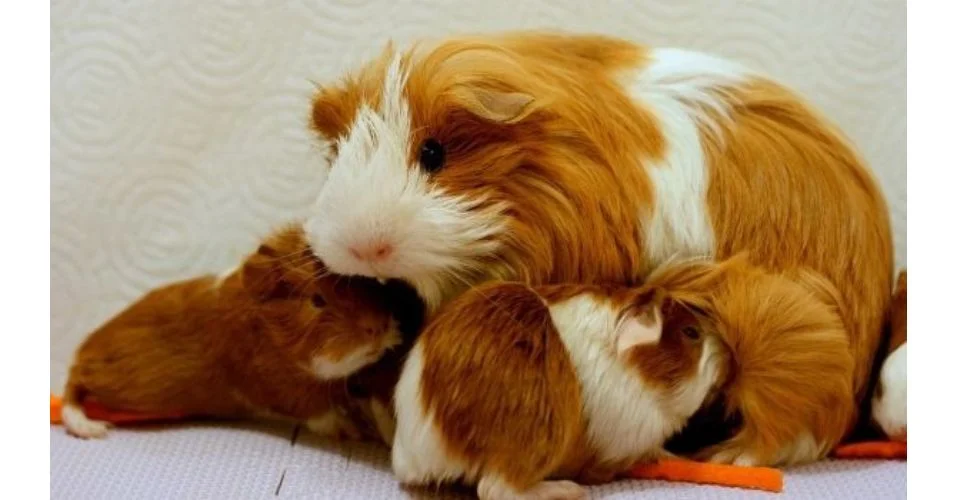
Well, if the mama guinea pig is doing her job, you need to do nothing more than observe.
Baby guinea pigs are supercharged and fully developed when they come into this world. However, mama guinea pig will have to eat the afterbirth and clean her pups. It is by eating the afterbirth that the chemical process in mama guinea pig’s mammary glands begin for the production of milk.
Baby guinea pigs start nursing within 24 hours of birth and will also start to nibble on solid food such as moistened pellets within 2 to 3 days of birth. That said, baby guinea pigs will nurse for three to four weeks on mama guinea pig’s milk.
Until guinea pups are weaned, mama guinea pig will be responsible for keeping her pups clean and stimulate them to urinate and defecate. During this time, mama guinea pig will also be producing softer poop pellets for baby guinea pigs to consume. Yes, guinea pigs eat their poop. This ensures that baby guinea pigs have healthy bacteria in their digestive system for proper digestion.
Baby guinea pigs grow fast. Before you know it, they will be ready to live it one their own and be ready to conquer the world.
